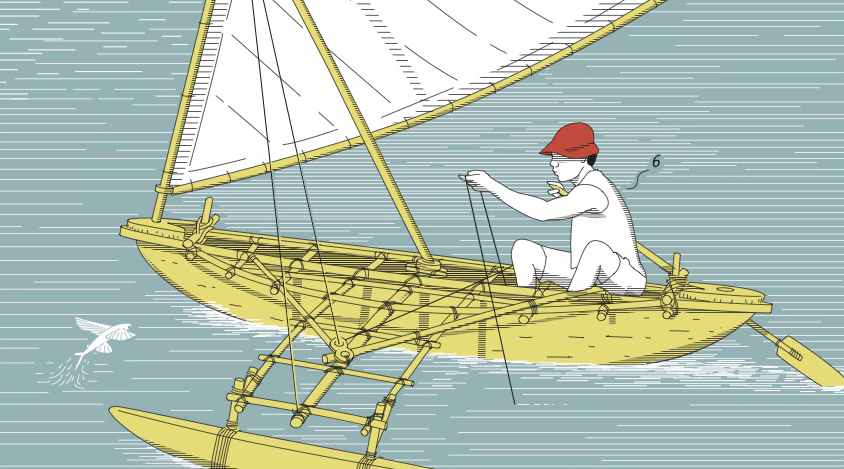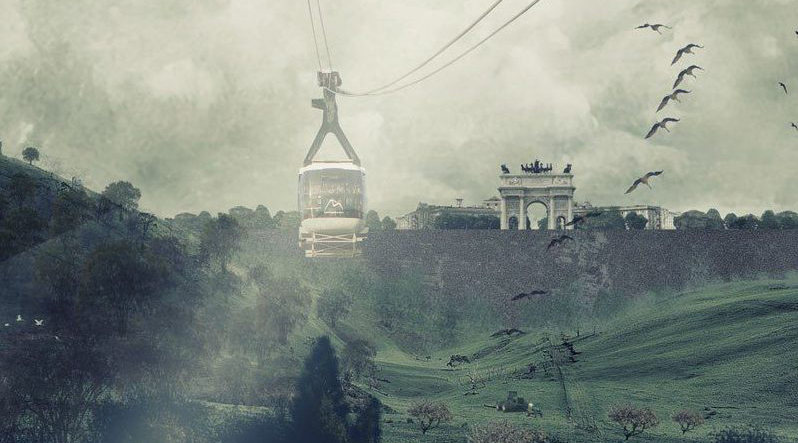EDITOR’S NOTE: The full script of this lecture-performance was published in The Empire Remains Shop (Columbia Books on Architecture and the City, 2018), a book by Cooking Sections. The documentation of the lecture-performance was filmed on the occasion of the book launch at e-flux in New York on April 13, 2018.
Voice A: In July 2013 lab technician Kenneth McRae murdered his wife Jane before killing himself in the West Midlands.
Voice D: He went ‘mad’ after finding out that Japanese knotweed was growing under his house.
A: It spread from the nearby golf course onto his property.
D: But no knotweed was found in the property after the fateful murder.
A: Last year William Jones hanged himself after being notified that Japanese knotweed was growing on his land.
D: Japanese knotweed (Fallopia japonica) and other ‘non-native’ species have been at the forefront of a WAR against non-human invaders in Northern Europe and especially in the UK.
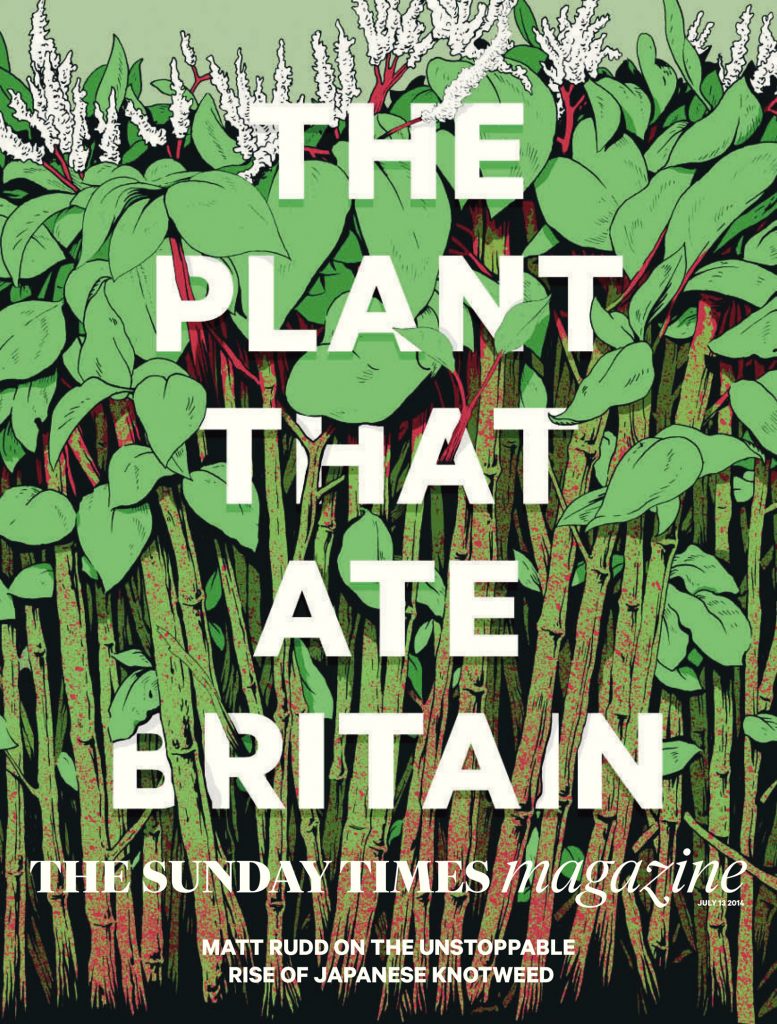
A: They have been accused of taking over the land.
D: Private property and public ground.
A: Gardens and forests.
D: Houses and factories.
A: Highways and waterways.
D: Any ways in which plants can appear.
A: Long before people started to take their lives into their own hands, the British government allocated enormous sums of money to try and solve the problem.
D: The problem? Plants from elsewhere invade us here.
A: In preparation for the 2012 Olympic Games, £100 million were spent clearing the Olympic grounds.
D: The total cost to the British taxpayer for fighting Japanese knotweed and other ‘invaders’ is around £250 million per year.
A: It is estimated that the global expenditure on mitigation and eradication programs for invasive species has exceeded £1.8 trillion.
D: In the 2000s, Japanese knotweed transformed from a horticultural problem into a mediatic event. Journals, newspapers, and tabloids all reported the great invasion.
A: They portrayed the environmental challenge in war paint. They declared battle to save the “pure British” landscape.
D: The Garden Invader that could sink your mortgage (gasp)
A: The Invader, it it’s in your garden panic now (gasp)
D: At war with aliens (gasp)
A: Hidden threat (gasp)
D: Knot in my backyard (gasp)
A: The plant that could cost you your home (gasp)
D: The Plant that ate Britain (gasp)
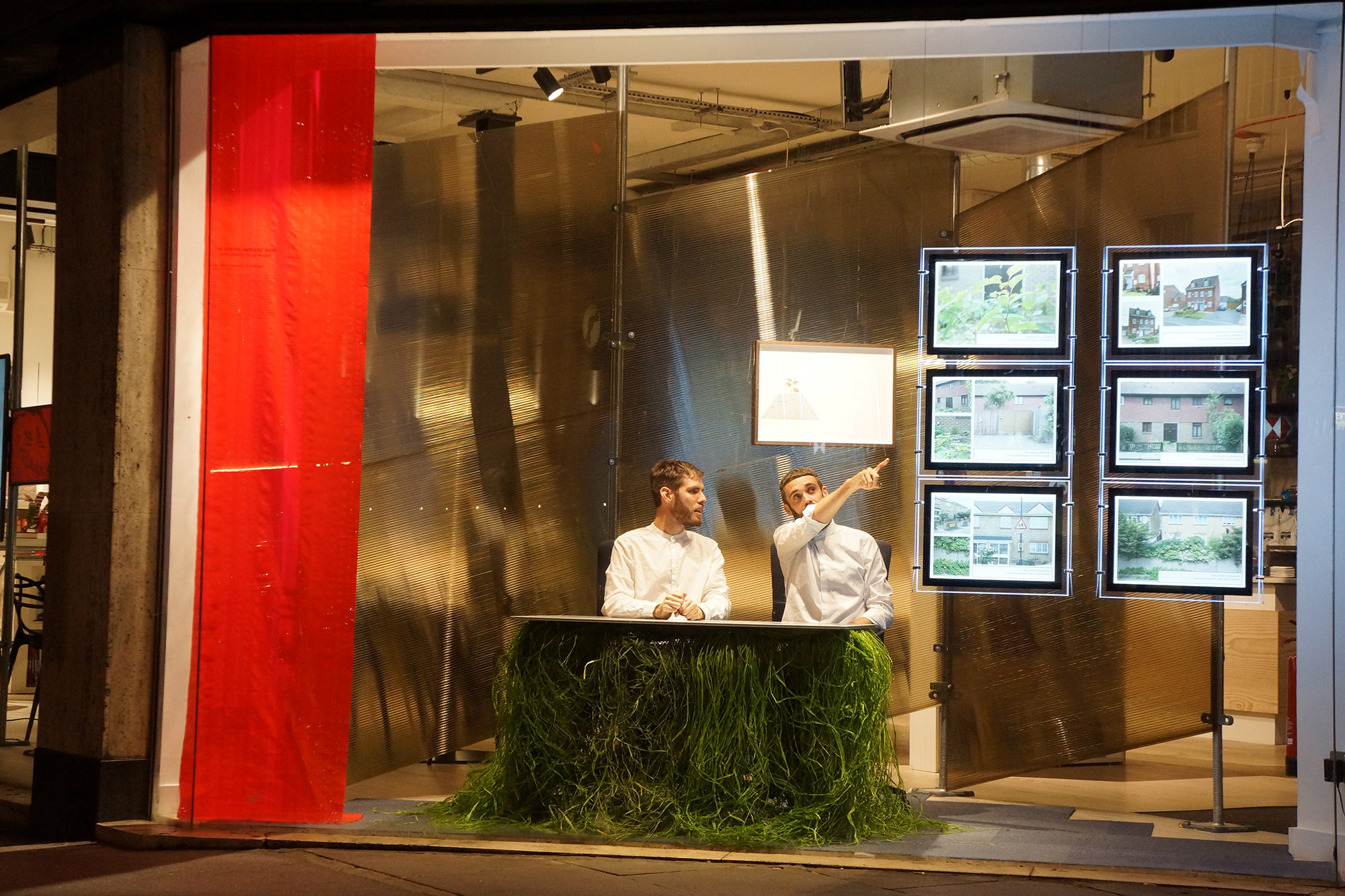
A: Panic was not caused by the presence of Japanese Knotweed. It was banks and credit institutions who made people panic. Any trace of knotweed on a property could result in the refusal of a mortgage. Real estate market and property value are threatened by a plant and a new industry of fear was born.
D: For the construction of the subjective taxonomies of native and non-native, pseudo-objective thresholds are to be demarcated. Science and politicians need to determine the precise TIME an alien plant arrived or when it became naturalized. The amount of years that a species has inhabited a certain place should be enough to determine its degree of belonging.
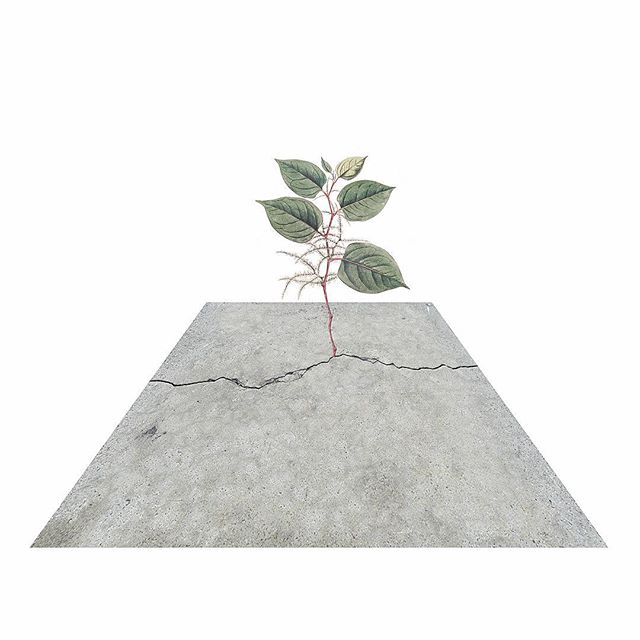
A: But what is the threshold?
D: 3 years?
A: 30 years?
D: 300 years?
A: 3,000 years?
D: 30,000 years?
A: Japanese knotweed arrived in Europe from Japan with the Bavarian doctor Philipp Franz von Siebold, as an exotic treat for his garden.
D: 9 August, 1850 is the date logged for the arrival of Japanese knotweed in Britain according to the Kew Gardens record of traveling species. After that, it quickly became commercially available for the first time.
A: Benefiting from its exotic origin, knotweed became a novelty plant and enjoyed special promotion from William Robinson. Leader of the Wild English Garden movement, Robinson rebelled against military-ordered flower patches and colors. He promoted a more “natural-looking” form of landscape and gardening: a fabricated wilderness, a chaotic man-made garden that looks as if it had been designed by nature itself.
D: In Britain it was landowners—with a desire to add variety and curiosity to their estates—who introduced “alien” species to their semi-public gardens: rhododendrons, Japanese knotweed, mandarin ducks, Canadian geese, gray squirrels, and little owls. Empire redesigned the wild.
A: Over the past two centuries the planet has experienced an incomparable movement of species across the globe. If we were to consider ”a longer time perspective, most native flora could actually be referred to as ‘alien invaders’”. Not only the definition of native or nonnative is challenging, but the association of the alien as a negative agent plays a crucial role in that distinction.
D: Japanese Knotweed has been stigmatized as a nonnative invasive or “the plant that can sink your mortgage”. There are two main reasons why it has created such an uproar in British media: being declared a ‘non-native’ ‘invasive’ plant; and the fact that it can allegedly penetrate through the foundations of any house. However, there is no rigorous evidence of Knotweed being more damaging than other plants when it comes to growing through a crack on a concrete surface. Scaremongering, deflation of property value and the refusal to grant mortgages to homeowners that have found Knotweed on their premises are processes that have created a market for expensive eradication programs.
A: The ‘Next “Invasive” Is “Native”’ re-thinks the ‘alien’ as an entity that actually constructs a new reality and brings a valuable hybridization. As part of it, we started a toxic assets portfolio: properties in the UK that have been devalued by JK and houses that have witnessed a homicide or suicide because of the panic to the loss of value.
D: At the Empire Remains Shop, we opened the Devaluing Property Real Estate Agency to think what is the agency of a plant in challenging the real estate market lobby in a city like London. Installed in our Shop Window, the Devaluing Property Real Estate Agency replicated the all too familiar aesthetics of real estate window displays in central London. Hundreds of people stopped by the window to look at our toxic assets: some engaged with the topic, others ridiculed it, and others became infuriated for playing with such a serious business and a stable pillar of society.
A: After a half-hour consultation on how to devalue property through JK, customers were served The Plant That Can Sink Your Mortgage Ice Cream, a recipe that incorporates and embraces JK as part of a post-industrial city ecosystem, showing one of the many ways the prolific growth of the plant can be put into use, rather than fighting it through million-dollar biocide programs.


